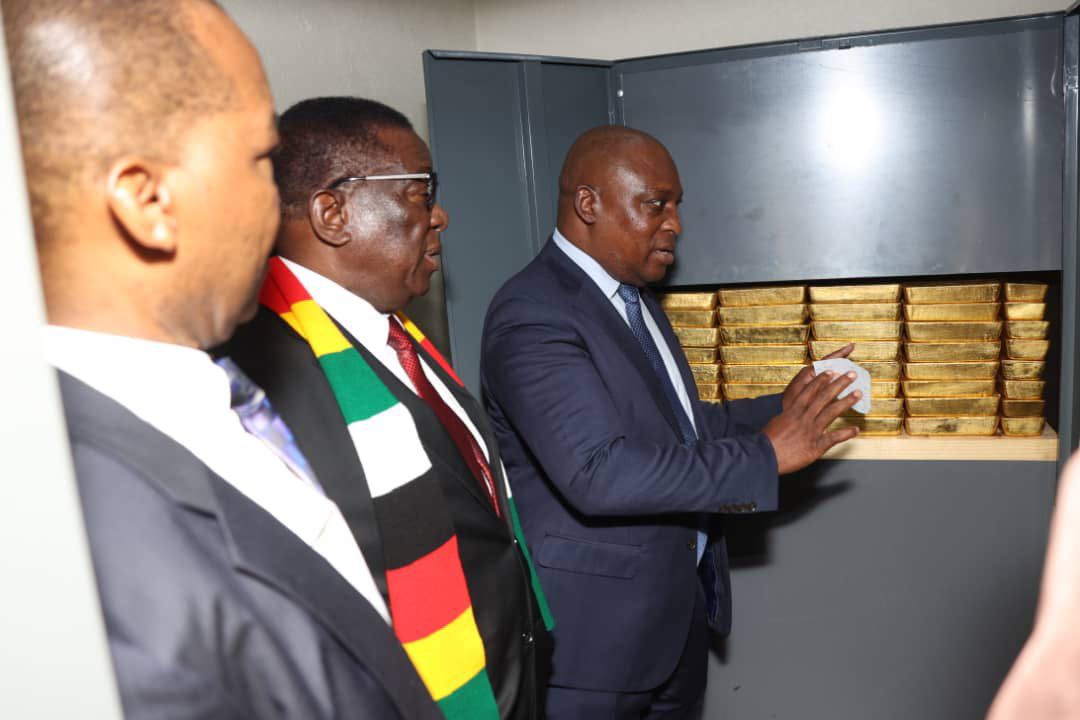The mining sector remains the backbone of Zimbabwe’s economy, contributing significantly to GDP and export revenues.
By Rudairo Mapuranga
In 2024, the Zimbabwe mining sector solidified its position as the most crucial industry, accounting for approximately 12% of GDP and nearly 70% of export earnings, according to the Reserve Bank of Zimbabwe (RBZ). With key minerals like gold, lithium, platinum group metals (PGMs), and diamonds fueling growth, Zimbabwe is on a promising path toward meeting—and potentially exceeding—its ambitious mining targets.
US$12 Billion Mining Roadmap: 2023 Target Review
Zimbabwe launched a roadmap to transform its mining industry into a US$12 billion revenue generator by 2023. Although the sector didn’t reach this target in 2023, groundwork in gold, lithium, PGMs, and diamonds has laid a strong foundation for growth. In 2024, the sector is expected to break revenue records with increased production, exploration, and technological innovations.
Gold: Zimbabwe’s Key Economic Driver
Gold remains central to the mining sector and foreign exchange earnings. The government had aimed to achieve US$4 billion in annual gold revenue as part of the US$12 billion mining plan by 2023. Although this goal remains unmet, Zimbabwe’s gold deliveries to the Fidelity Gold Refinery (FGR) increased by over 7% in the first ten months of 2024, indicating a positive trend for the year.
Freda Rebecca Gold Mine, Shamva, and Jena Mines, under Kuvimba Mining House, contribute around 10% of total gold deliveries to FGR. Kuvimba and other mining firms are prioritizing Environmental, Social, and Governance (ESG) standards, including a gold traceability system to align with global best practices. This approach enhances the credibility of Zimbabwe’s gold sector, attracting international investors.
In exploration, companies like Kavango Resources and Pambili Natural Resources are developing new gold projects, while Caledonia Mining Corporation is implementing technological upgrades at Blanket Mine. These advancements boost production and operational efficiency. Kuvimba Mining House is also expanding production at Shamva Gold Mine, aiming to double output over the next few years.
Indigenous player Scott Sakupanya continues to submit the highest amount of gold to Fidelity Gold Refinery (FGR). In 2023 his company Better Brands delivered 13 tonnes of gold to Fidelity Gold Refinery (FGR). Better Brands’s projections for the 2024 year, are to deliver 20 tonnes of gold.
Lithium: A Booming Industry Surpassing Expectations
Driven by global demand for electric vehicle (EV) batteries and energy storage, lithium has emerged as one of Zimbabwe’s most promising sectors. In 2023, annual lithium revenue exceeded the US$0.5 billion target, and further growth is expected.
Prospect Lithium Zimbabwe’s Arcadia Lithium Mine, owned by China’s Huayou Cobalt, is one of Zimbabwe’s largest lithium operations, producing over 200,000 tonnes of lithium concentrates between January and August 2024. With annual output expected to reach 450,000 tonnes and prices between US$800 and US$950 per tonne, the mine is well-positioned for profitability.
Other key players include Bikita Minerals and Sabi Star. Bikita has increased production to meet demand, while Kamativi Mining Company is studying the feasibility of building a lithium carbonate plant. Additionally, Bravura has begun constructing a lithium processing plant in Kamativi, with equipment now on-site.
Chrome: The Resurgence of ZimAlloys
Chrome production has also seen revitalisation, especially through the restoration of ZimAlloys’ high-carbon ferrochrome plants in Gweru. Resuming smelting operations, the company aims for annual ferrochrome production of 120,000 tonnes, advancing Zimbabwe’s goal to reclaim its position as a top chrome producer.
Coal: The Revival of HCCL Holdings
The coal sector, led by HCCL Holdings (formerly Hwange Colliery Company Limited), has made a significant recovery. After nearly collapsing, the 121-year-old company rebounded following government intervention and a restructuring of its operations. With over 4 million tonnes of coal produced annually and a profit of US$10.2 million in Q3 2023, HCCL will continue to be profitable in 2024.
Diamonds: A Rapidly Expanding Sector
The diamond sector, led by the Zimbabwe Consolidated Diamond Company (ZCDC), has seen notable growth, with annual production approaching 6 million carats—up from 1.8 million carats less than five years ago. ZCDC aims to reach 10 million carats annually by 2025. Additionally, Alrosa Zimbabwe’s promising exploration results are expected to further boost production. The sector is also emphasizing ESG standards to ensure ethical sourcing and sustainability.
Platinum Group Metals (PGMs): Resilience Amidst Commodity Price Softening
The PGM sector, which includes platinum, palladium, and rhodium, faced challenges in 2024 due to a decline in global prices. However, major players like Mimosa, Unki, and Zimplats have continued their development projects. Notably, Unki Mine achieved a rating of 75 from the Initiative for Responsible Mining Assurance (IRMA), highlighting its commitment to responsible practices. Zimplats is advancing its new smelter project and has announced a base metal refinery. However, both Zimplats and Mimosa have undertaken employee retrenchments as part of cost-cutting efforts. Karo Resources and Bravura are also advancing their PGM projects at Mhondoro-Ngezi and Selous, respectively.
ESG Commitments: A New Era of Responsible Mining
In 2024, adherence to ESG standards has become a defining feature of Zimbabwe’s mining sector. Companies like Kuvimba Mining House are introducing a gold traceability system to ensure ethical sourcing. Kamativi Mining Company and Freda Rebecca Gold Mine are also working towards standardized ESG reporting, setting benchmarks for other firms.
Conclusion: A Promising Future with Strong ESG Foundations
Zimbabwe’s mining sector in 2024 is characterized by steady growth, increased investment, and a commitment to ESG principles. Gold, lithium, diamonds, and PGMs are driving economic progress, while responsible practices are becoming standard across operations. With continued investment, exploration, and global compliance, Zimbabwe is well-positioned to become a major player in the international mining industry.
This article first appeared in the Mining Zimbabwe Magazine edition 76
.png)




